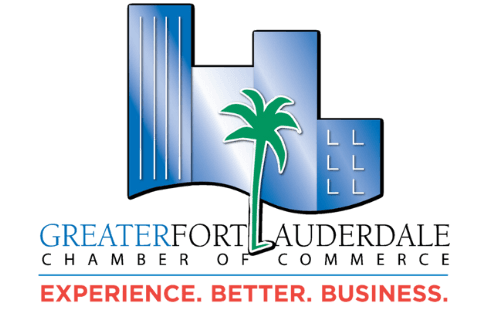Resilient by Design: How Smart Founders Anticipate and Control Risk
Resilient by Design: How Smart Founders Anticipate and Control Risk
Running a business is as much about managing uncertainty as it is about chasing opportunity. Founders who understand risk management early — not just in finance but in operations, compliance, and reputation — build companies that last.
TL;DR
Smart founders don’t eliminate risk; they structure it.
This guide shows you how to:
• Identify hidden business vulnerabilities
• Structure legal and financial safeguards
• Build a proactive response framework
• Use digital tools and professional services to stay compliant
1. Understanding the Modern Risk Landscape
Today’s founders face a convergence of classic and emerging risks:
• Financial volatility: shifting interest rates, payment defaults, and investment cycles.
• Cybersecurity threats: 43% of cyberattacks now target small businesses (IBM Security Report).
• Legal noncompliance: missed filings, late notices, and unmonitored litigation.
• Operational fragility: over-reliance on a single supplier or platform.
• Reputational exposure: social media crises or misinformation that spreads faster than facts.
Managing risk isn’t reactive anymore — it’s an operating system.
2. The Hidden Legal Risk Few Founders Notice
One of the most overlooked business risks is missing critical legal notices — such as service of process, government correspondence, or time-sensitive lawsuits.
When these documents go unseen, companies can face default judgments or fines without ever realizing they were sued.
That’s why founders designate a registered agent, an authorized party responsible for receiving official mail and legal documents on behalf of the business. Outsourcing this role ensures every critical document is received promptly and handled professionally.
To stay compliant without adding an administrative burden, you can get a registered agent service at ZenBusiness. This small operational choice can save your company from losses.
3. The Founder’s Risk Readiness Audit
Quick Test:
If your business went offline for 72 hours, would your revenue, customer trust, and compliance status all survive intact? If not, the checklist above is your to-do list.
4. How to Build a Risk Management Framework
A good framework turns chaos into clarity. Follow these four steps:
Step 1: Identify
List every possible disruption — from data loss to vendor default. Use tools like Trello or Notion to track them visually.
Step 2: Quantify
Estimate the financial and operational impact of each risk. Free calculators at Investopedia can help with baseline modeling.
Step 3: Mitigate
Prioritize the top five risks and assign mitigation owners. Use contracts, insurance, and process redundancy.
Step 4: Monitor
Set a quarterly review. Automation platforms like Zapier or governance tools from Diligent can alert you to triggers or overdue reviews.
5. Common Risks and Founder-Level Solutions
6. The Community Connection: Why Local Networks Still Matter
Risk isn’t only technical — it’s relational. A strong local network can buffer uncertainty and unlock collective intelligence. The Greater Fort Lauderdale Chamber of Commerce (ftlchamber.com) exemplifies this idea. They provide workshops on insurance literacy, legal compliance, and digital risk protection — plus member directories that make reliable partners easier to find. Joining a local chamber gives founders access to peer mentorship, early policy alerts, and even post-disaster recovery resources.
7. Product Spotlight: Financial Shielding Made Simple
Beyond compliance and insurance, founders can strengthen resilience with financial visibility tools. For instance, Ramp offers automated expense tracking and card controls that flag abnormal spending — a critical advantage when monitoring for internal fraud or runaway budgets. While not a risk management solution in the legal sense, its transparency layer helps founders identify early cash-flow warning signs.
8. FAQ — Quick Answers for Busy Founders
What’s the difference between risk prevention and risk management?
Prevention eliminates hazards; management prepares for them when prevention fails.
How often should I review my risk plan?
At least once per quarter or after any major business change (new location, product launch, or funding event).
Is insurance enough?
No. Insurance compensates for loss but doesn’t prevent downtime or regulatory fallout. Combine it with legal and operational safeguards.
Should startups worry about compliance this early?
Yes. Early compliance builds trust with investors and avoids expensive corrections later.
What’s one thing founders forget most often?
Monitoring legal correspondence — a simple oversight that can become a costly mistake.
9. Glossary
• Registered Agent: A third party designated to receive legal documents and official notices for a business.
• Risk Appetite: The level of risk an organization is willing to tolerate in pursuit of its objectives.
• Mitigation Plan: A structured approach to reducing or transferring identified risks.
• Operational Resilience: The ability of an organization to continue providing critical services during disruption.
• Scope of Liability: The range of legal responsibility a company or individual may face in the event of damages or noncompliance.
Make Risk Your Competitive Edge
Smart founders don’t fear risk — they engineer around it. By combining structured compliance (e.g., using a registered agent), operational discipline, and community support, you can convert uncertainty into durability. In the modern founder’s playbook, resilience isn’t a backup plan — it’s the business model itself.
Join the Greater Fort Lauderdale Chamber of Commerce today and unlock unparalleled opportunities to grow your business, connect with local professionals, and enjoy exclusive member benefits in South Florida’s vibrant business community!
